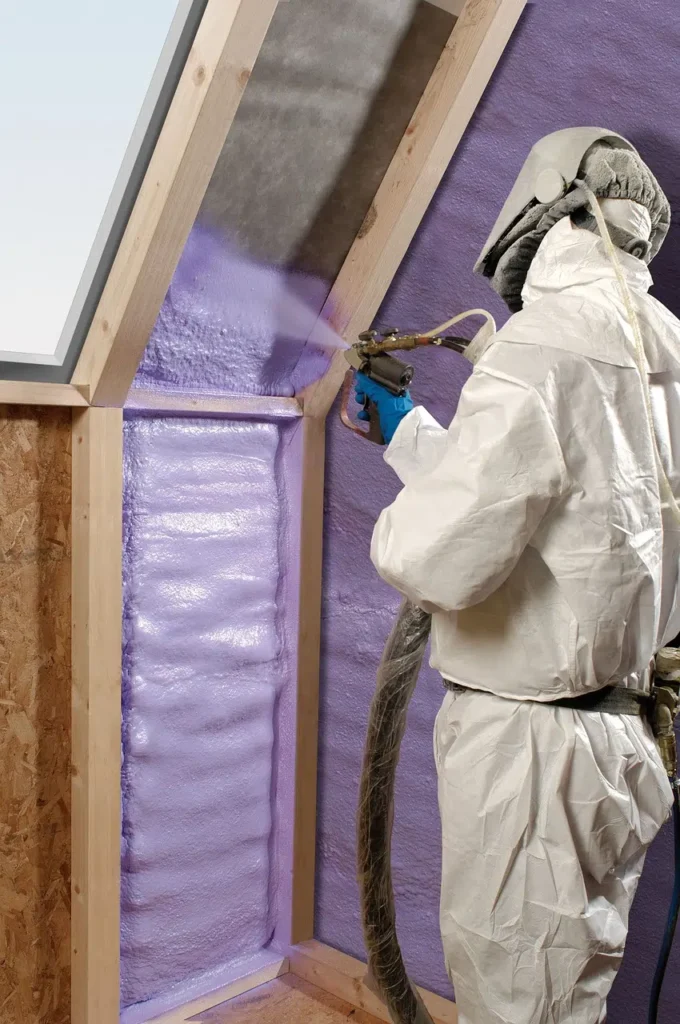What is Spray Foam Insulation?
Spray foam insulation is applied to walls, ceilings, and floors to provide superior thermal and soundproofing benefits. It’s created by mixing two chemical compounds that expand into foam upon application. This foam fills gaps, cracks, and cavities, forming an airtight seal that reduces heat transfer and noise. It offers superior insulation compared to traditional insulation materials like fiberglass or cellulose.
Compared to traditional materials like fiberglass, spray foam offers enhanced insulation properties. According to the U.S. Department of Energy, buildings that use spray foam insulation can reduce heating and cooling costs by up to 50% when applied properly.
Benefits of Using Spray Foam Insulation
Spray foam insulation offers numerous benefits for metal buildings:
- Energy Efficiency: Due to its high R-value and air-sealing properties, spray foam insulation significantly reduces energy loss and lowers heating and cooling costs.
- Improved Comfort: By minimizing air leakage and drafts, spray foam insulation creates a comfortable indoor environment with consistent temperatures.
- Noise Reduction: The dense foam acts as a sound barrier, reducing noise from outside sources.
- Moisture Control: Spray foam insulation forms a moisture barrier, preventing condensation and minimizing the risk of mold or mildew growth.
- Durable and Long-Lasting: Once installed, spray foam insulation remains effective for the life of the building, requiring minimal maintenance.
One of the key advantages of spray foam insulation, particularly closed-cell foam, is its ability to conform perfectly to irregular surfaces. During application, the foam expands significantly, forming a monolithic, airtight barrier that fills every nook and cranny. Unlike traditional insulation materials, which may leave gaps and spaces, spray foam ensures complete coverage, maximizing energy efficiency and reducing the potential for air leakage. In fact, this ability can improve energy efficiency by up to 95%, particularly in hard-to-reach areas, making it superior in both thermal resistance and moisture control.
Additionally, spray foam insulation is versatile and can be used in various applications, from new construction to retrofitting. Whether for residential homes, commercial buildings, or industrial facilities, it provides thermal and soundproofing benefits. This adaptability makes spray foam a practical choice for numerous insulation needs.









